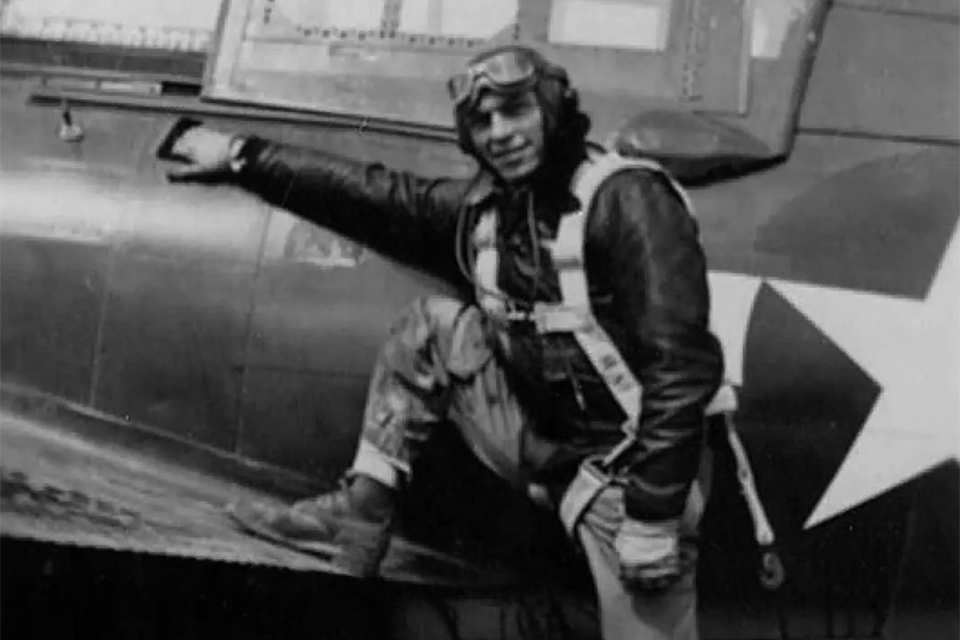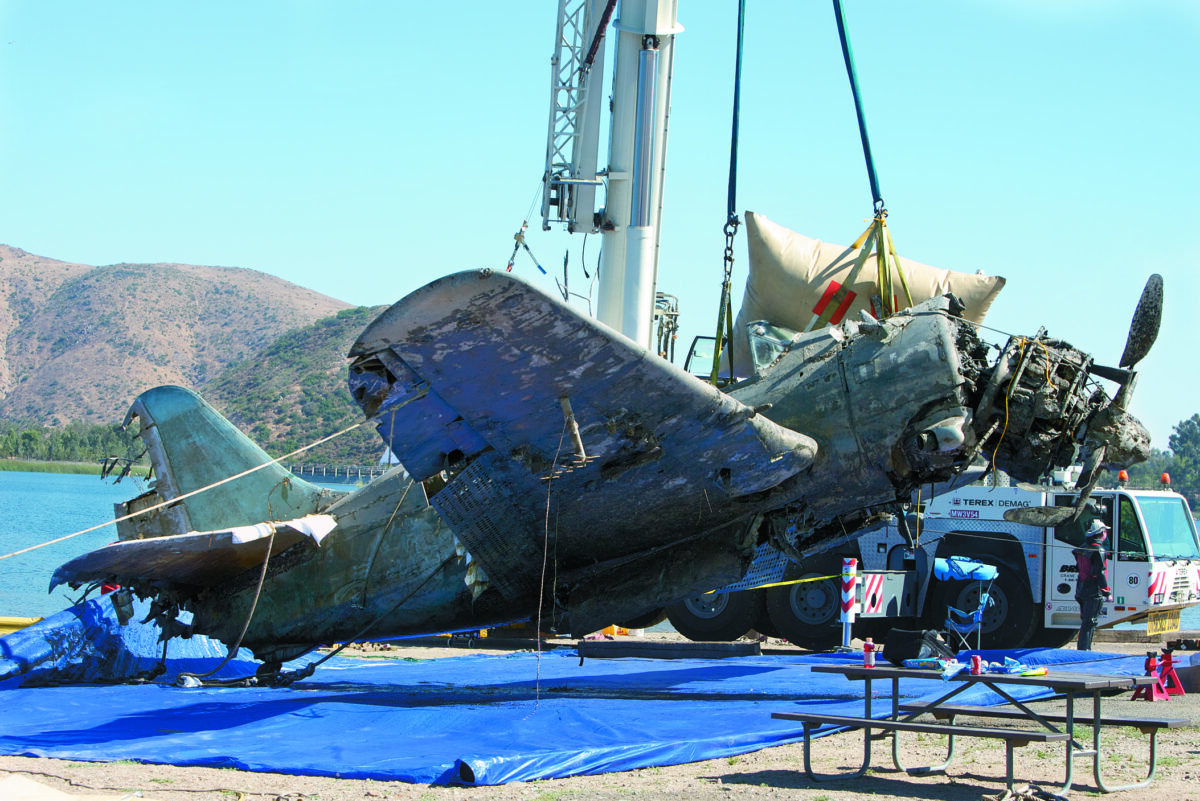Helldiver Recovered in California
Though 6,299 Helldivers were manufactured by U.S. and Canadian factories, the Curtiss SB2C is today one of the rarest of all major U.S. aircraft types to see combat during World War II. Only the Vought Vindicator and Douglas Devastator (none survive), Martin Mariner (one) and P-61 Black Widow and P-63 Kingcobra (four each) exceed the much-maligned “Sonofabitch Second Class” in rarity: Six Helldivers survive, and the Commemorative Air Force’s ship is the sole flyable example.
A seventh, however, will be joining the mini-fleet as soon as lots of mud is washed away and some serious rebuilding is done. A latemodel SB2C-4, recovered from a reservoir near San Diego, will be restored and displayed at Pensacola’s National Naval Aviation Museum.
The -4 was arguably the best of the Helldivers, the result of nearly 97,000 engineering changes that Curtiss was forced to make during the lifetime of the design. Earlier variants were poorly constructed, riddled with engineering faults, underpowered, had some severe structural weaknesses and were characterized by what one British test pilot termed “appalling handling.” They were in nearly every way inferior to the airplane they were intended to replace, the Douglas SBD Dauntless (which had its own designator-derived nickname,“Slow But Deadly”). The hulking but relatively fast SB2C-4 won grudging respect, however, and did well as a carrier-based dive bomber over the Marianas, Leyte Gulf and Okinawa.

The Helldiver lifted from the water of the Lower Otay Reservoir on August 20 had been ditched by Ensign E.D. Frazer after an engine failure during a training flight from the deck of the carrier Wasp, cruising off the California coast. Frazer and his rear-seater, Joseph Metz, climbed out of the still-floating bomber, swam ashore and casually hitchhiked back to their land base, Brown Field, in San Diego. Neither Frazer nor Metz are still alive, but Frazer’s son, Richard, was present when his late father’s airplane came out of the water. He looks forward to visiting Pensacola with his grandchildren, to show them the airplane their great-granddad flew.





